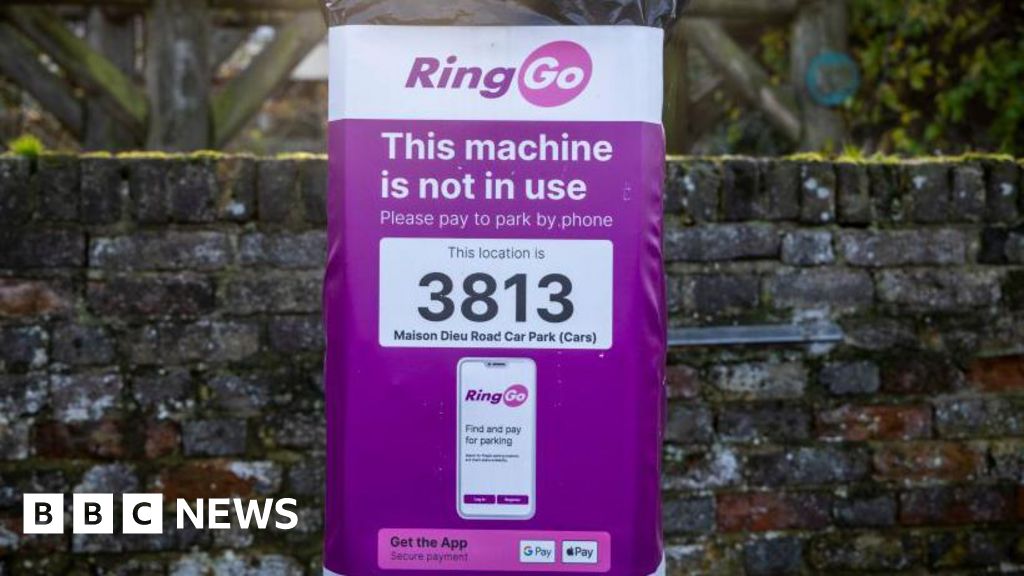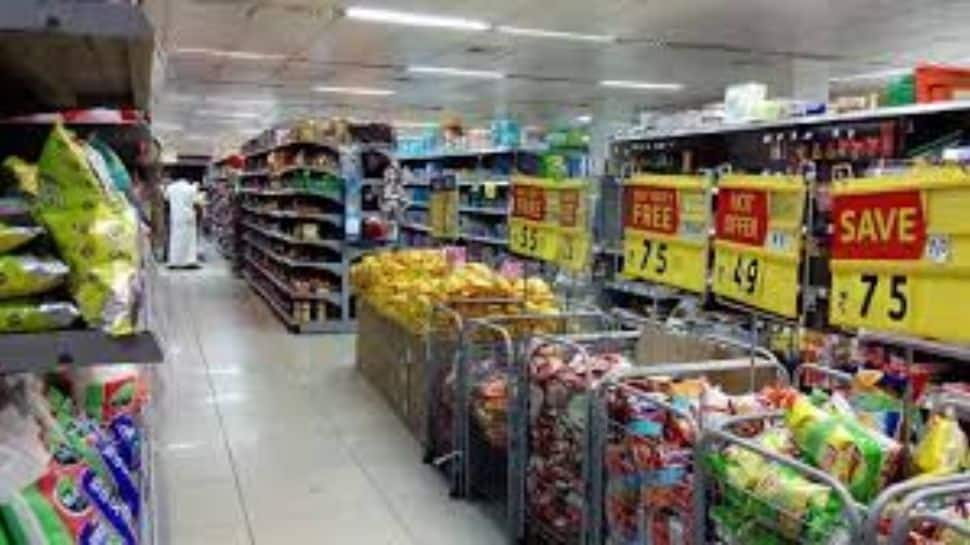Business
Don’t force drivers to use parking apps, RAC says

Drivers should not be forced to use mobile apps to pay for parking, the RAC has said, after three-quarters of drivers it surveyed said they had issues with them.
The most common problem was poor phone signal in the car park, followed by the app not recognising the car park the driver was in.
The findings come as the government prepares to expand its National Parking Platform (NPP), which aims to prevent drivers from having to download multiple parking apps.
The RAC welcomed the NPP but said more local authorities and parking companies needed to sign up.
RAC senior policy officer Rod Dennis said parking operators “should offer drivers at least two different ways to pay”.
“Parking should, in theory at least, be one of the simplest tasks any driver completes but having to navigate a variety of differently designed apps – and register an account, vehicle details and bank cards with each one – can be a pain,” he said.
“No-one should be forced to use a mobile app when parking if they don’t want to, especially those who struggle with technology or just don’t have a smartphone.”
The RAC survey of 1,700 people found that 13% of respondents couldn’t work out how to use a parking app. Of the respondents over 75, this figure was 26%.
Nearly half of those surveyed said they preferred to pay by card or contactless payment on their phones.
BBC News visited Deansgate North Q-Park in Manchester to find out what drivers thought of the findings.
One young man said using the apps was easy but his preferred method to pay for parking was Apple Pay on his phone.
Another said he got a ticket after having trouble connecting to a parking app.
“I had to send receipts to basically prove I had a parking permit.”
Following a trial in 10 local authorities in England, the government announced in May that the National Parking Platform would be expanded across the country, but car park and app providers have to opt in.
The platform is run on a not-for-profit basis by the British Parking Association (BPA), which represents parking operators.
Mr Dennis said the RAC welcomed the launch of the NPP, which “should spell the end of drivers needing to download lots of separate apps just to park and simplify things enormously”.
He added: “This does depend on enough local authorities and parking companies up and down the country signing up, though.”
The RAC said that if drivers run into signal issues while trying to pay for parking, they should collect evidence of their attempts to pay, including screenshots of any app error messages.
Margie Rimes from York is 77 and has a smartphone that she uses regularly. But she gets “panicky” about paying for parking with apps.
“If I’m going somewhere where I know I’m going to have to park… I find it stressful,” she said.
She has taken taxis a few times “rather than have to face the [parking] machine”, in part because she has poor eyesight.
Her local train station allows people to pay for parking at the ticket office, which she appreciates.
But she thinks the NPP is a good idea: “I think if they’re going to have apps it’s better to be standardised.”
The NPP said its purpose was “to make parking simpler and more consistent by allowing drivers to use the parking app of their choice in participating locations”.
“The NPP is about expanding choice, not restricting it. Local Authorities using the NPP can continue, and many still do, offer cash payments if they wish, and a phone line will also be available to support those who prefer or need to pay by phone.”
The BPA said it welcomed the increase in use of parking apps, but added it was “vital that technology works for everyone”.
“Our members are committed to making parking as simple and accessible as possible, and we actively encourage operators to offer a range of payment options, including cashless and traditional methods to meet the needs of all drivers,” it said in a statement.
Business
OGRA Announces LPG Price Increase for December – SUCH TV

The Oil and Gas Regulatory Authority (OGRA) has approved a fresh increase in the price of liquefied petroleum gas (LPG), raising the cost for both domestic consumers and commercial users.
According to the notification issued, the LPG price has been increased by Rs7.39 per kilogram, setting the new rate at Rs209 per kg for December. As a result, the price of a domestic LPG cylinder has risen by Rs87.21, bringing the new price to Rs2,466.10.
In November, the price of LPG stood at Rs201 per kg, while the domestic cylinder was priced at Rs2,378.89.
The latest price hike is expected to put additional pressure on households already grappling with rising living costs nationwide.
Business
Taxable Value Of Goods Surges 15% In Sep-Oct As GST Cuts Boost Consumption

New Delhi: The taxable value of all supplies under GST surged by a robust 15 per cent during September-October this year, compared to the same period in 2024 due to sharp increase in consumption triggered by the tax rate cuts on goods across sectors that kicked in from September 22, according to official sources.
The growth in the same two-month period last year was 8.6 per cent. “This surge in taxable value during ‘Bachat Utsav’ demonstrates strong consumption uplift, stimulated by reduced rates and improved compliance behaviour,” a senior official said.
He pointed out that the growth has especially been strong in sectors where rate rationalisation was implemented, such as FMCG, pharma goods, food products, automobiles, medical devices and textiles. In these sectors, the taxable value of supplies has seen significantly higher growth, confirming that lower GST rates translated directly into higher consumer spending.
“It vindicates our strategy that reducing rates on essentials and mass-use sectors would create demand-side buoyancy — a Laffer Curve–type demand uplift,” he explained.These trends confirm that GST next-gen reforms have not disrupted revenue stability, and that consumption-side buoyancy has begun to translate into higher taxable value in key sectors.
This growth is in value terms which means that since GST rates were lower, the growth in volume terms will be even higher. It is clearly visible that while the Next Gen Reforms resulted in significant Bachat — increased consumption, industry has been very proactive in passing on the GST savings to the final consumers and ensuring that there is no supply side deficiency.
As GDP private consumption data will be released much later, GST taxable value serves as the most reliable real-time proxy for consumption, and the current numbers clearly indicate sustained demand expansion, the official added.
Business
Private sector data: Over 2 lakh private companies closed in 5 years; govt flags monitoring for suspicious cases – The Times of India

NEW DELHI: The government on Monday said that over the past five years, more than two lakh private companies have been closed in India.According to data provided by Minister of State for Corporate Affairs Harsh Malhotra in a written reply to the Lok Sabha, a total of 2,04,268 private companies were shut down between 2020-21 and 2024-25 due to amalgamation, conversion, dissolution or being struck off from official records under the Companies Act, 2013.Regarding the rehabilitation of employees from these closed companies, the minister said there is currently no proposal before the government, as reported by PTI. In the same period, 1,85,350 companies were officially removed from government records, including 8,648 entities struck off till July 16 this fiscal year. Companies can be removed from records if they are inactive for long periods or voluntarily after fulfilling regulatory requirements.On queries about shell companies and their potential use in money laundering, Malhotra highlighted that the term “shell company” is not defined under the Companies Act, 2013. However, he added that whenever suspicious instances are reported, they are shared with other government agencies such as the Enforcement Directorate and the Income Tax Department for monitoring.A major push to remove inactive companies took place in 2022-23, when 82,125 companies were struck off during a strike-off drive by the corporate affairs ministry.The minister also highlighted the government’s broader policy to simplify and rationalize the tax system. “It is the stated policy of the government to gradually phase out exemptions and deductions while rationalising tax rates to create a simple, transparent, and equitable tax regime,” he said. He added that several reforms have been undertaken to promote investment and ease of doing business, including substantial reductions in corporate tax rates for existing and new domestic companies.
-

 Sports1 week ago
Sports1 week agoWATCH: Ronaldo scores spectacular bicycle kick
-

 Entertainment1 week ago
Entertainment1 week agoWelcome to Derry’ episode 5 delivers shocking twist
-

 Politics1 week ago
Politics1 week agoWashington and Kyiv Stress Any Peace Deal Must Fully Respect Ukraine’s Sovereignty
-

 Business1 week ago
Business1 week agoKey economic data and trends that will shape Rachel Reeves’ Budget
-

 Politics1 week ago
Politics1 week ago53,000 Sikhs vote in Ottawa Khalistan Referendum amid Carney-Modi trade talks scrutiny
-

 Tech6 days ago
Tech6 days agoWake Up—the Best Black Friday Mattress Sales Are Here
-

 Tech1 day ago
Tech1 day agoGet Your Steps In From Your Home Office With This Walking Pad—On Sale This Week
-

 Fashion1 week ago
Fashion1 week agoCanada’s Lululemon unveils team Canada kit for Milano Cortina 2026






